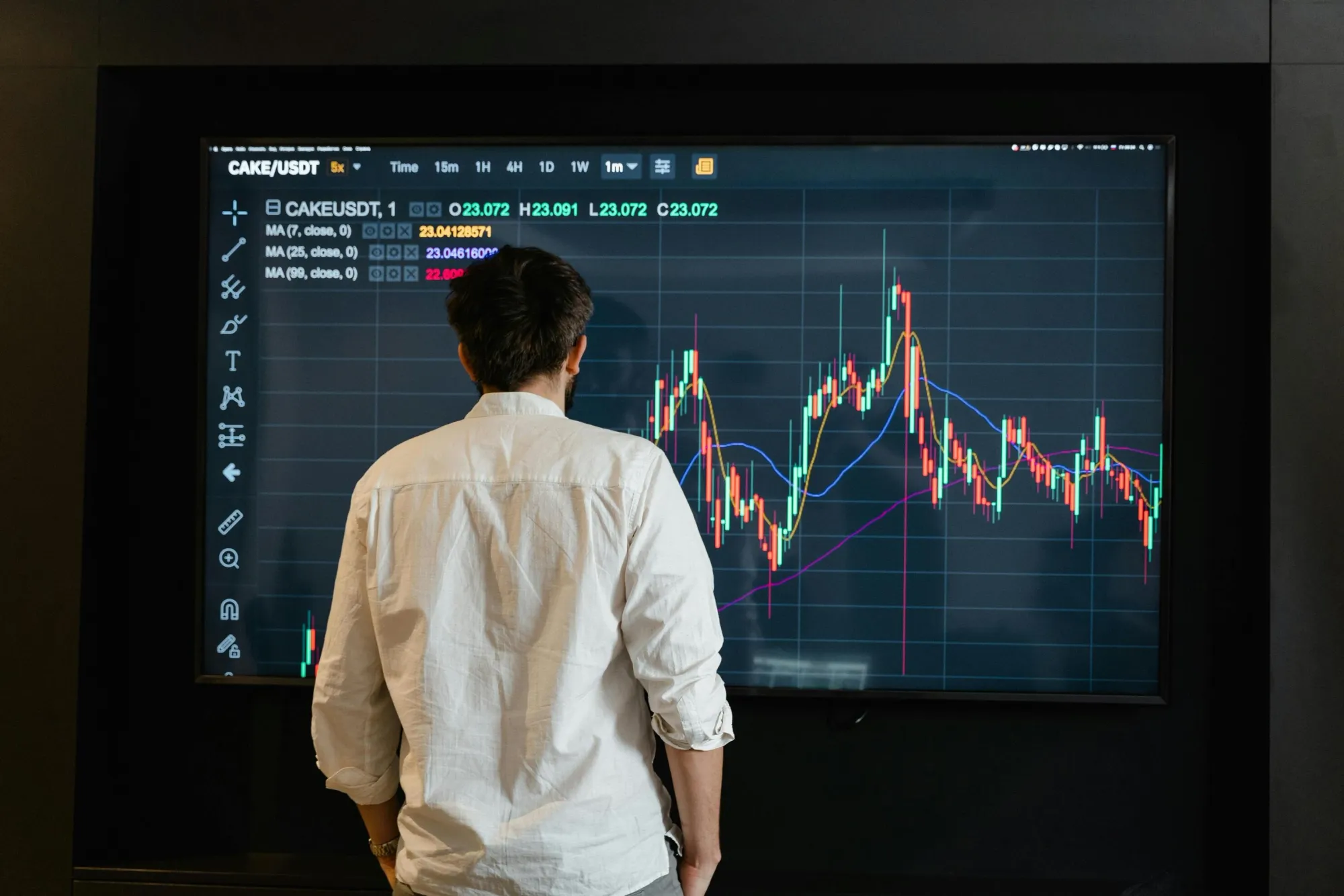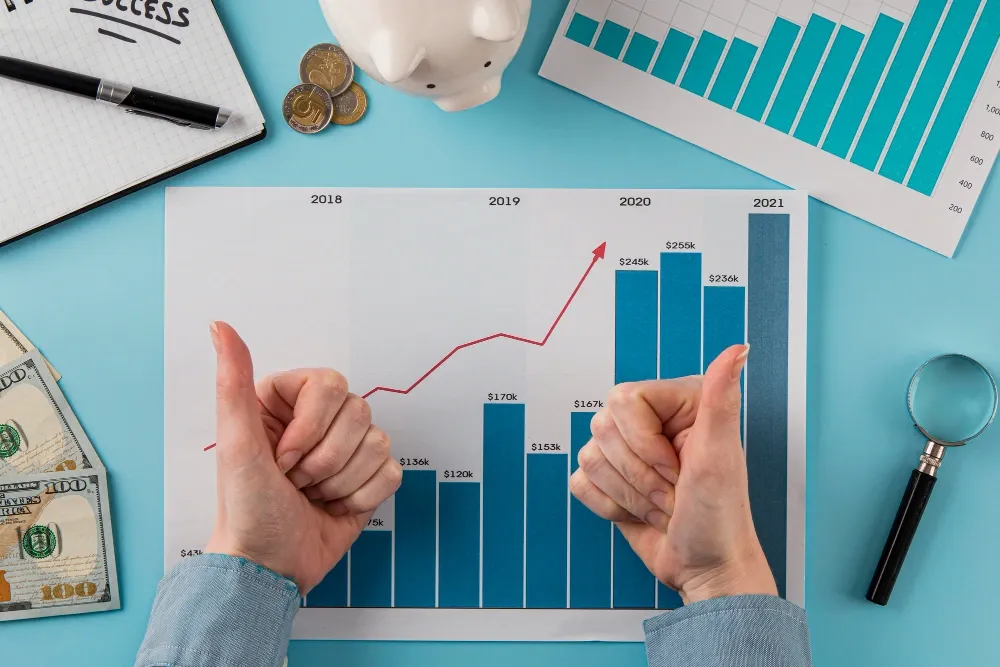Trading and investing are two core approaches to making money in the financial markets — but while both aim for profit, the timeframe, strategy, and mindset are completely different.
In simple terms, trading focuses on short-term market movements, while investing builds long-term wealth. Understanding this difference helps you choose a path that fits your goals and risk tolerance.
What Is Trading?
Trading is the act of buying and selling financial instruments such as stocks, currencies, commodities, or cryptocurrencies for short-term profit. Traders monitor market movements closely, looking to capture quick gains from price fluctuations.
Trading plays a vital role in providing liquidity to financial markets. It doesn’t rely on holding assets for years but rather on making smaller, frequent profits — sometimes within minutes or hours.
Commonly traded assets
- Stocks: Traders profit from daily price swings rather than long-term ownership.
- Forex: The 24-hour global currency market lets traders buy and sell currencies around the clock.
- Commodities: Assets like gold or oil react strongly to global economic events, offering short-term opportunities.
- Cryptocurrencies: Bitcoin, Ethereum, and other digital assets attract traders seeking high volatility and fast returns.
Is trading safe?
Trading can be profitable, but it also involves significant risk. Market volatility and emotional decision-making can lead to losses. A trader’s safety depends on knowledge, discipline, and risk management.
How to Start Trading for Beginners
Trading success starts with preparation. Here are key steps:
- Learn the basics. Understand order types, market hours, and price movements.
- Choose your strategy. Popular methods include day trading (same-day trades), swing trading (multi-day trades), and scalping (quick trades lasting seconds).
- Use analysis tools. Technical analysis (charts, indicators) helps identify entry points, while fundamental analysis (earnings, news) gives context.
- Manage risk. Use stop-loss and take-profit levels to control potential losses and lock in gains.
What Is Investing?
Investing is a long-term strategy focused on buying assets and holding them to grow value over time. Investors look beyond short-term price swings and instead focus on fundamentals — a company’s profitability, growth potential, and overall financial health.
The goal of investing is wealth accumulation through appreciation, dividends, or interest income.
Common Investment Assets
- Stocks: For long-term ownership and dividend growth.
- Bonds: For steady income and lower volatility.
- ETFs or Mutual Funds: For diversification across markets.
- Real Estate: For both rental income and capital appreciation.
Trading vs Investing: Key Differences
| Aspect | Trading | Investing |
|---|---|---|
| Time Horizon | Short-term (minutes to months) | Long-term (years or decades) |
| Goal | Quick profits from volatility | Gradual wealth growth |
| Analysis Used | Technical charts and indicators | Fundamental company analysis |
| Transaction Frequency | Frequent buy/sell activity | Buy and hold for long periods |
| Risk Exposure | Higher, due to leverage and volatility | Lower, spread over time |
| Emotional Control | Requires fast reactions | Demands patience and discipline |
Which Is Harder: Trading or Investing?
There’s no single answer. Trading requires constant monitoring and emotional resilience, while investing demands patience and a long-term mindset.
If you enjoy analyzing short-term trends and reacting quickly, trading might suit you. If you prefer steady growth and minimal daily stress, investing is a better fit. Many people blend both strategies — trading for active income while investing for long-term goals.
Popular Trading Styles
- Day Trading: Open and close all positions within one trading day.
- Swing Trading: Hold positions for days or weeks to capture medium-term moves.
- Scalping: Execute dozens of fast trades to earn small, quick profits.
Each style requires strong analytical skills and strict risk management.
Benefits of Trading and Investing
| Investing | Trading |
|---|---|
| Long-Term Growth – Build wealth through compounding and appreciation. | Quick Returns – Profit from short-term price movements. |
| Passive Income – Earn dividends or interest without selling assets. | High Liquidity – Easily buy or sell positions. |
| Diversification – Spread risk across multiple assets and sectors. | Flexibility – Adjust positions quickly to match market trends. |
| Tax Benefits – Some investments enjoy reduced capital gains tax. | Profit in Any Market – Traders can earn in both bull and bear markets. |
Risks in Trading and Investing
| Investing Risks | Trading Risks |
|---|---|
| Market downturns reduce asset value. | Sudden price reversals can cause large losses. |
| Credit or default risks in bonds. | Leverage can magnify both gains and losses. |
| Low liquidity can delay asset sales. | Overtrading or emotional decisions lead to mistakes. |
Smart Risk Management Tips
- Diversify across different assets or sectors.
- Set stop-loss and take-profit levels to automate exits.
- Know your risk tolerance before committing capital.
- Use both technical and fundamental analysis for balanced insight.
- Review strategies regularly as market conditions change.
Choosing the Right Platform
The right trading or investing platform can make a major difference. Use a licensed, transparent app that offers security, education, and global market access.
For example, Gotrade allows you to invest in U.S. stocks like Apple, Google, and Tesla starting from just IDR 15,000 (≈$1), making global diversification affordable for beginners.
Final Thoughts
The biggest difference between trading and investing lies in your approach. Trading is fast, active, and profit-driven, while investing is patient, steady, and focused on long-term growth.
Before you begin, define your goals, evaluate your risk appetite, and choose the method that aligns with your lifestyle. And most importantly — use a regulated, reliable platform to ensure your journey toward financial freedom stays secure.
FAQ
1. What’s the main difference between trading and investing?
Trading focuses on short-term price movements; investing builds wealth through long-term growth.
2. What assets are best for trading?
Stocks, forex, commodities, and cryptocurrencies are among the most popular.
3. Which analysis method is best?
Traders use technical analysis, while investors rely on fundamental analysis.
4. Is trading riskier than investing?
Yes. Trading involves higher volatility, while investing smooths out risk over time.
5. How do I manage risk?
Diversify your portfolio, use stop-loss orders, and stay disciplined with your strategy.
Disclaimer:
Gotrade is the trading name of Gotrade Securities Inc., which is registered with and supervised by the Labuan Financial Services Authority (LFSA). This content is for educational purposes only and does not constitute financial advice. Always do your own research (DYOR) before investing.




